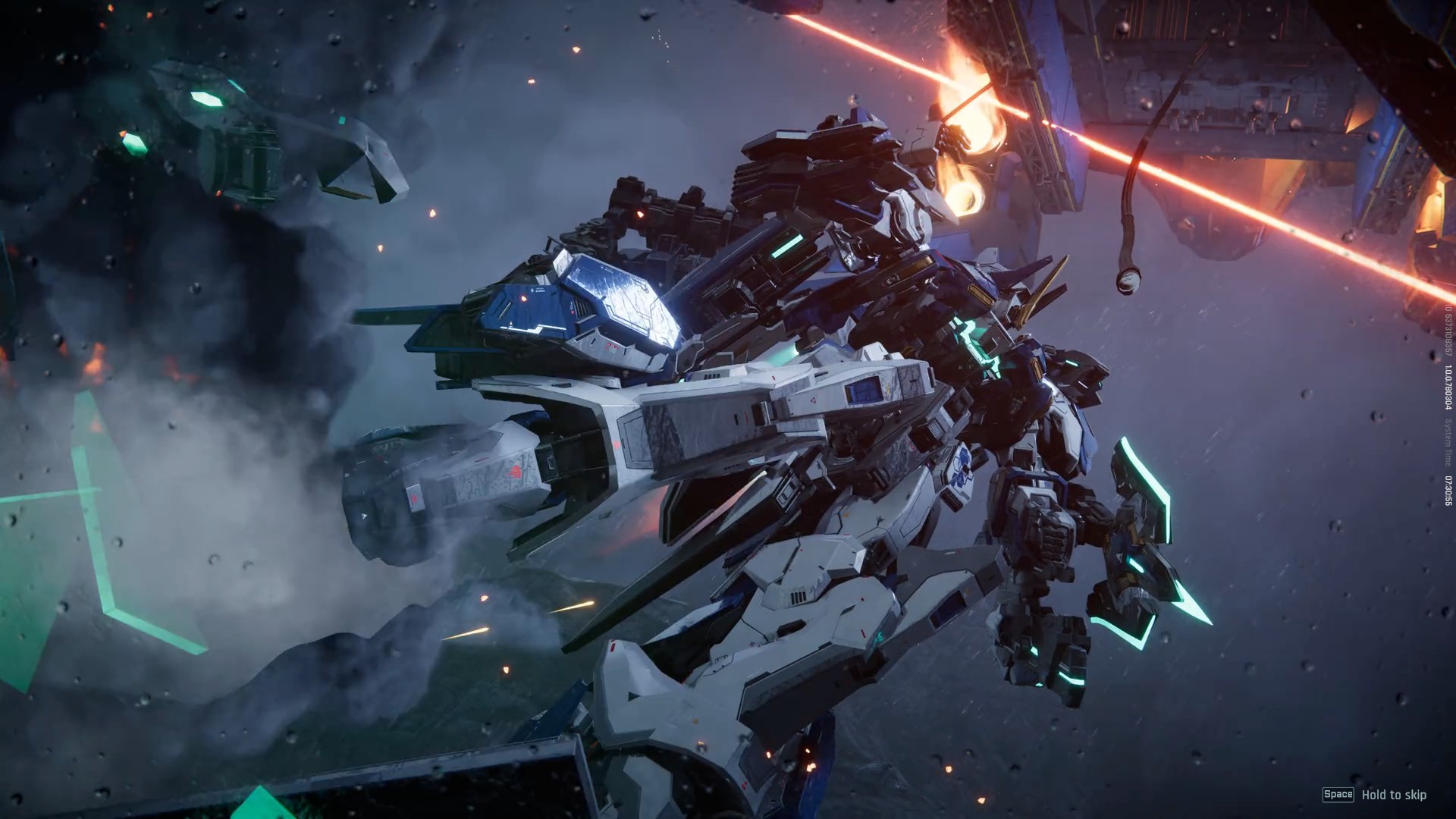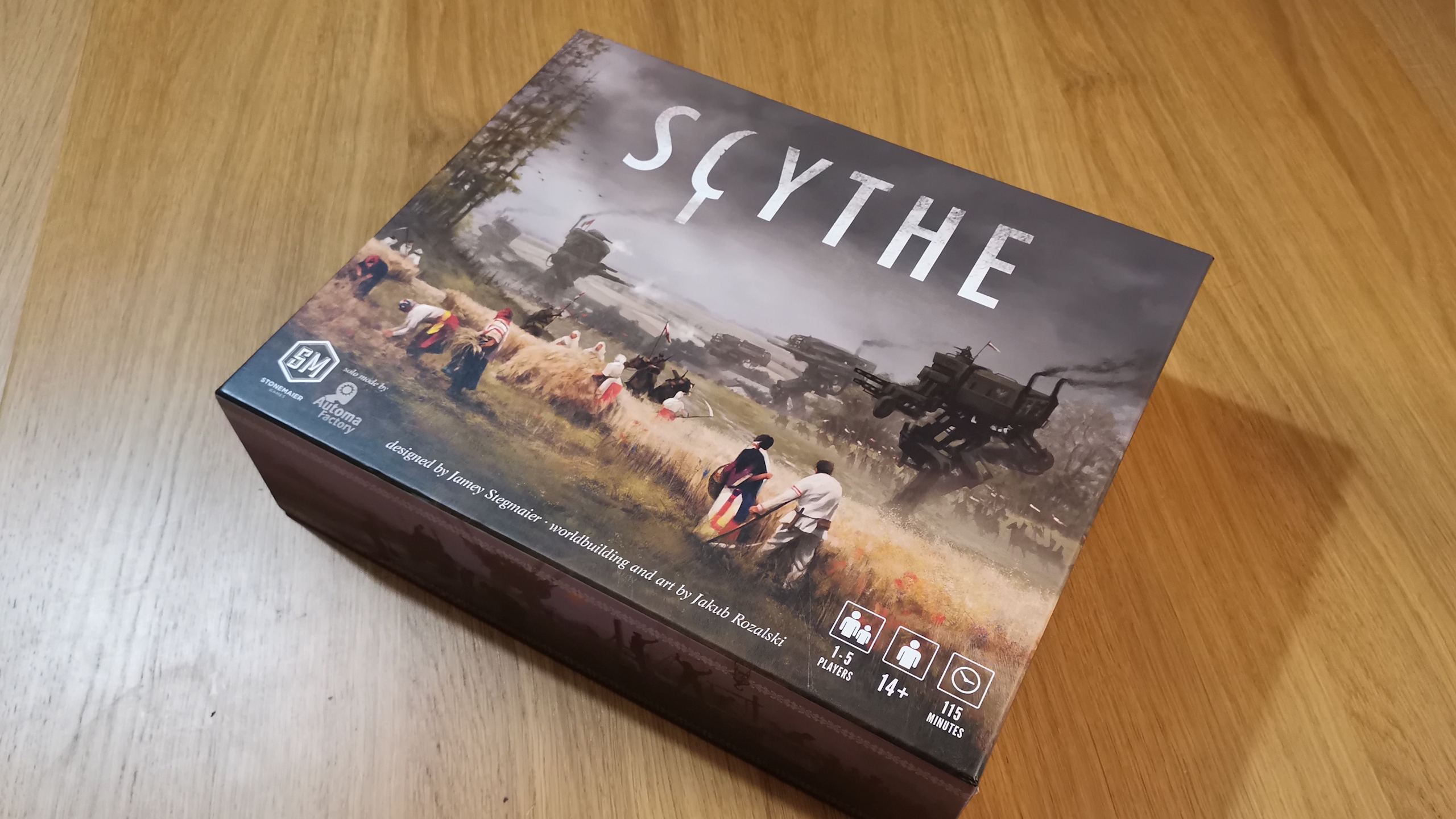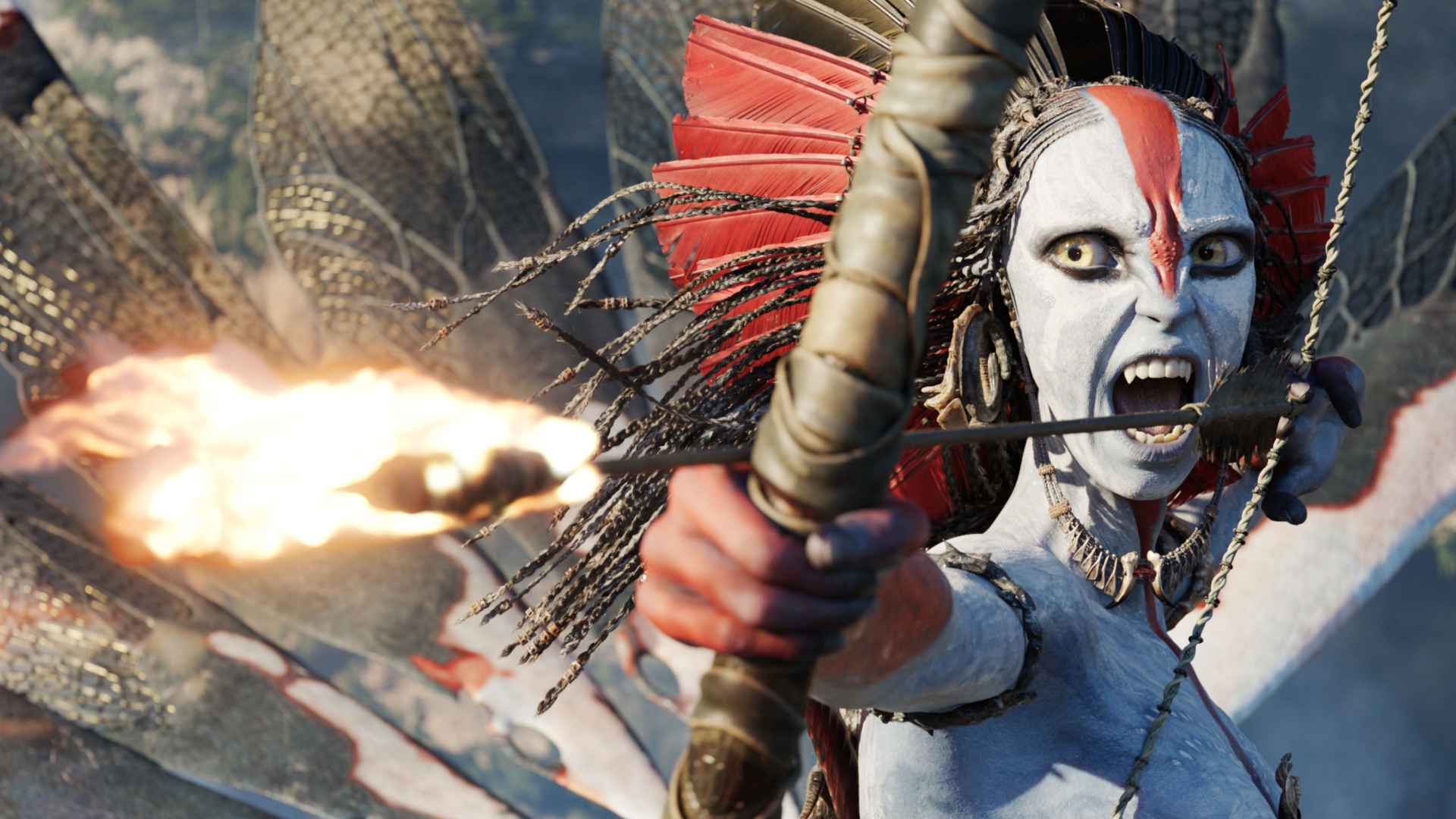GamesRadar+ Verdict
A novel mecha-based take on the hero shooter that delivers the pilot fantasy with style and feels like what a modern-day team-based Virtual On might be. Yet, while more approachable in its hero and extraction shooter guises, it also lacks deeper level customization in favor of more shallow cosmetics delivered with aggressive microtransactions.
Pros
- +
Excellent presentation and feel to Strikers and pilots
- +
Approachable in variety and defense options
- +
Decent selection of game modes and challenges
Cons
- -
Shallow cosmetic-only customization
- -
Aggressive microtransactions
- -
Cribs a lot from hero shooters, apart from personality
Why you can trust GamesRadar+
Mecha can be beautiful but intimidating things, and the complexity is perhaps the point if you're a gunpla hobbyist. It's something Mecha Break understands well. But, since my days of growing up thrilled by the Megazord's transformation during every episode of Mighty Morphin Power Rangers or my casual dalliance with the Sega Saturn version of Virtual On, it's the fantasy of piloting these powerful and stylish combat machines that has always been the appeal rather than understanding the sci-fi nuts and bolts of it. In this regard, Mecha Break really scratches that itch.
Amazing Seasun Games' team-based mecha shooter isn't about simulating putting a mecha together but more simulating the awesomeness of jumping into the cockpit of one, jetting straight into a battle and locking onto other mechas with an arsenal of flashy high-tech weaponry with the same slick production values as a Michael Bay flick.
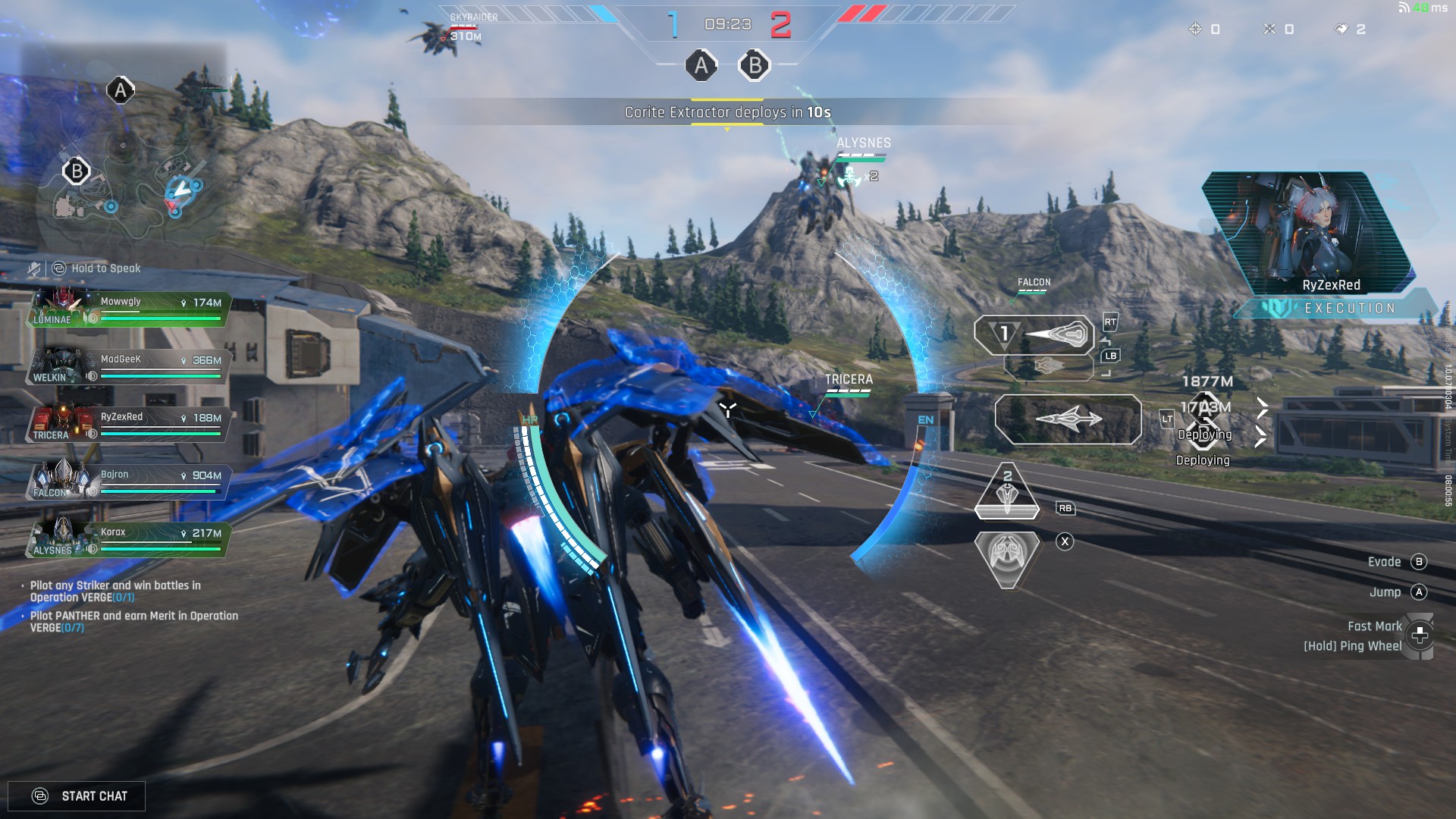
Release date: July 2, 2025
Platform(s): PC, Xbox Series X/S
Developer: In-house
Publisher: Amazing Seasun Games
Mecha Break actually begins with you creating your own pilot avatar, which adds to the overall presentation that other mecha games tend to eschew. Seeing your human pilot climbing into a mecha, powering it up in the cockpit, and emerging victorious at the end of a winning match (should you make MVP), is a great way of selling the fantasy of piloting your own mech – known as a Striker.
Frankly, the character creator is absurdly more detailed than it has any right to be, even if the overall aesthetic of avatars easily falls into the vein of being beautiful but soulless. If you're creating a female avatar, that means you also have a very skin-tight outfit that the camera naturally lingers on. There's even a whole base you can walk around in but with little to no functions, save for several lore-dumping NPCs and your own room where you can trigger a gratuitous shower cutscene (eat your heart out, Death Stranding 2).
If you're looking for narrative depth, you'd be better served with Armored Core 6. Mecha Break, on the other hand, doesn't even have much of a story, save for two introductory, but totally skippable, tutorial missions that establishes its sci-fi future where a highly desirable but dangerous mineral called Corite has rendered much of the planet uninhabitable. Here, only Strikers are able to operate, fighting each other for resources.
Locked on
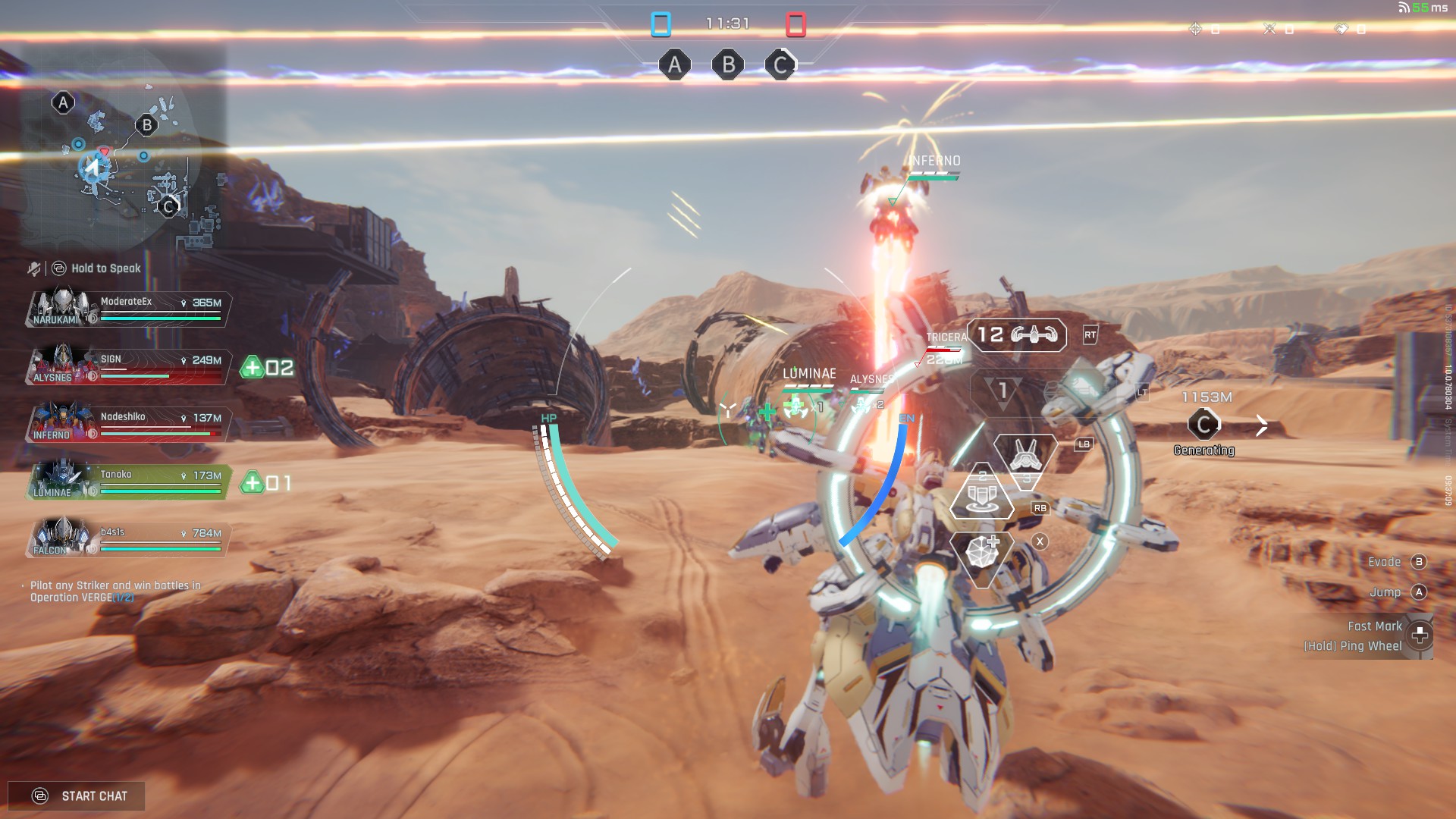
Ultimately, you're here for the Striker mecha, and it's here that Amazing Seasun delivers. These mecha may have all their weapons and skills predetermined, but with 12 available from the start, that provides a generous choice for figuring out your preferred playstyle. They fit into the kind of classes you would expect from a hero shooter, like Narukami, who snipes at long range with its beam cannon, or Panther, who charges at opponents with a homing lance but also wields a shield that can change into a fast-slashing sword. There's even some pretty decent tutorials that explains each Strikers' abilities before providing some genuinely challenging PvE timed challenges that require making use of all their abilities to pass.
Still, compared to a standard hero shooter, you have the advantage of being a jet-boosting mecha that's equipped with targeting radar where your melee and ranged attacks can lock on, taking the pressure off on pinpoint precision. While that might sound too advantageous, it's balanced by how prepared these machines are for survival, which will be music to the ears of players who hate being on the receiving end of a one-shot kill (ultimates is also one element Mecha Break doesn't crib from the hero shooter formula).
Weekly digests, tales from the communities you love, and more
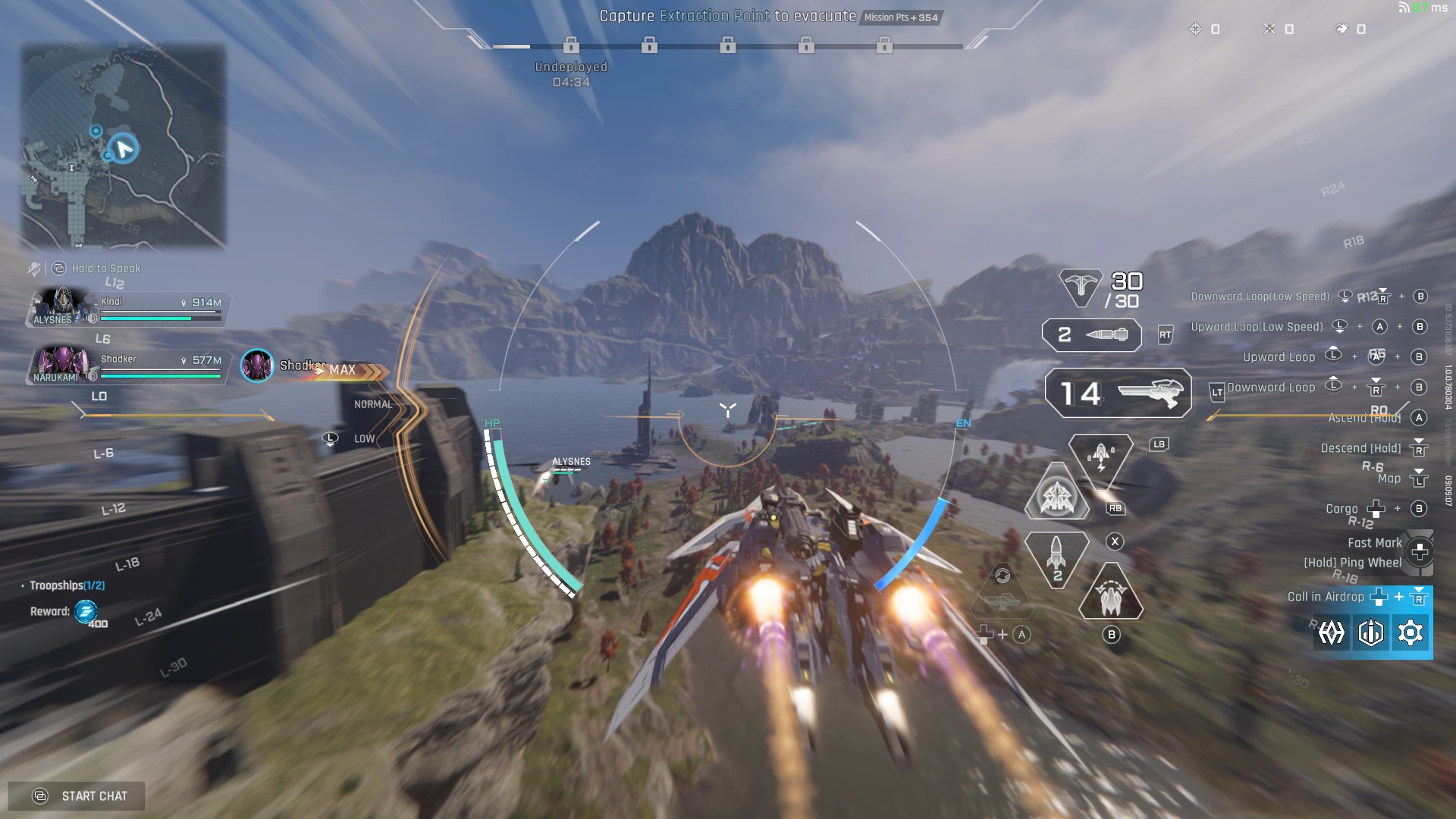
Objectives will be pretty familiar if you've played the likes of Overwatch 2.
Tanky Tricera may be the most heavily armored, but other Strikers compensate with different defense strategies. Support-type Pinaka can heal itself as well as teammates, Stellaris' cloaking ability can evade tracking, and starter/all-rounder Alysnes can be tempting to stick with since it essentially has two lives, becoming more powerful after auto-resurrecting. I've had matches where duels can be quite drawn out attritional affairs, with stalemates only breaking when another teammate lends their support for an added advantage, or if someone gets too carried away and burns-out of energy (EN).
Oftentimes these mech vs mech duels can serve as a diversion – outside of the 3v3 deathmatch-style Ace Arenas, the main draw is the 6v6 Operation Verge where you're competing over objectives rather than kills (though weekly missions still reward you based on how many kills or assists you can achieve with a specific Striker). Each of the randomly selected maps have their own unique team objectives, which will nonetheless be pretty familiar if you've played the likes of Overwatch 2, such as escorting a payload or a domination-style mode involving data nodes.
There are nonetheless novel touches, such as how it's actually a race between two payloads instead of the traditional tussle of attacking and defending sides. There's even some context to what you're doing, given how abstract these modes can often be. For instance, in the Eye of Mistra where you're competing to deliver launch keys to your data terminal, the winning team is rewarded with a cutscene of a rocket ship's launch. It would however help if ranked and casual modes were more clearly communicated as the former is simply labelled 'matchmaking' on the menu, and it's only this mode where you can complete mission objectives to earn more game currency in a session.
Extract yourself
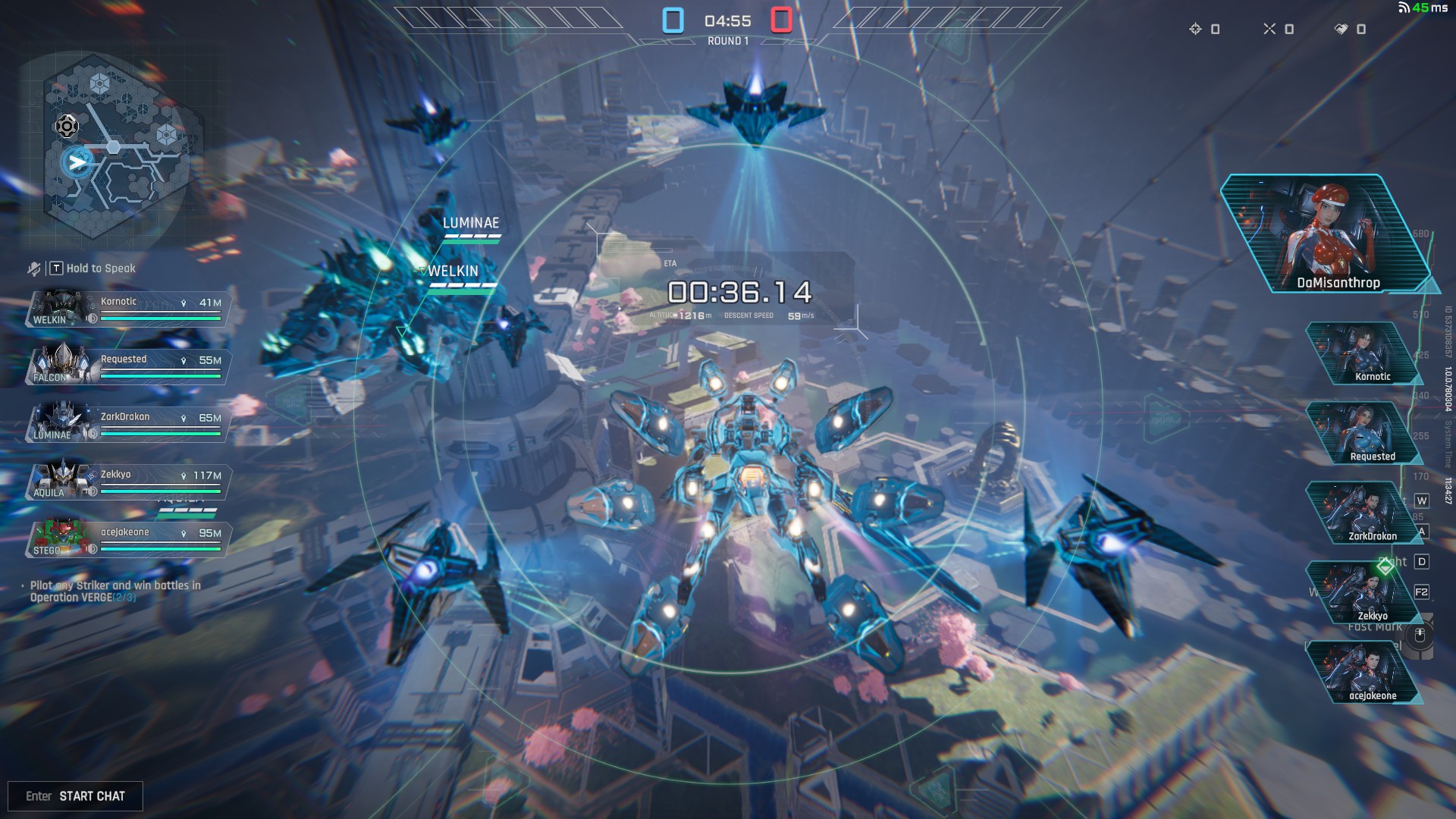
Mecha Break also dips its feet into the ever-competitive PvPvE extraction mode space, with its Operation Storm. I find this mode to be one of the more approachable extraction shooters I've played, not just because you can select the difficulty beforehand but you also get more than one life, with the chance to recover your loot. Jumping into the open world map of Mashmak always starts gently but never dull as there are plenty of points of interests with a concentration of AI-controlled enemies that you can jet right over to scrap with, taking down grunt mechs and turrets before combining your firepower on the mini-boss targets that yield supply crates that will hopefully grant you new weapons, mods, or other loot.
Weapons and mods are probably the most interesting part of Mashmak because it does afford you more depth and customization for your Strikers in how they play – even if the caveat is that weapons are disposable secondary loadouts you either only use during that match, or have to get dropped into the map on another run, as opposed to having it fitted into your mech back at base. Mods come in different rarities and while they enhance your Strikers, they always come with debuffs, so for instance you might have more health but a slower recovering shield, or improved air boost at the expense of ground speed. It helps to prevent any player from getting too overpowered, especially in a mode that can often be unforgiving.
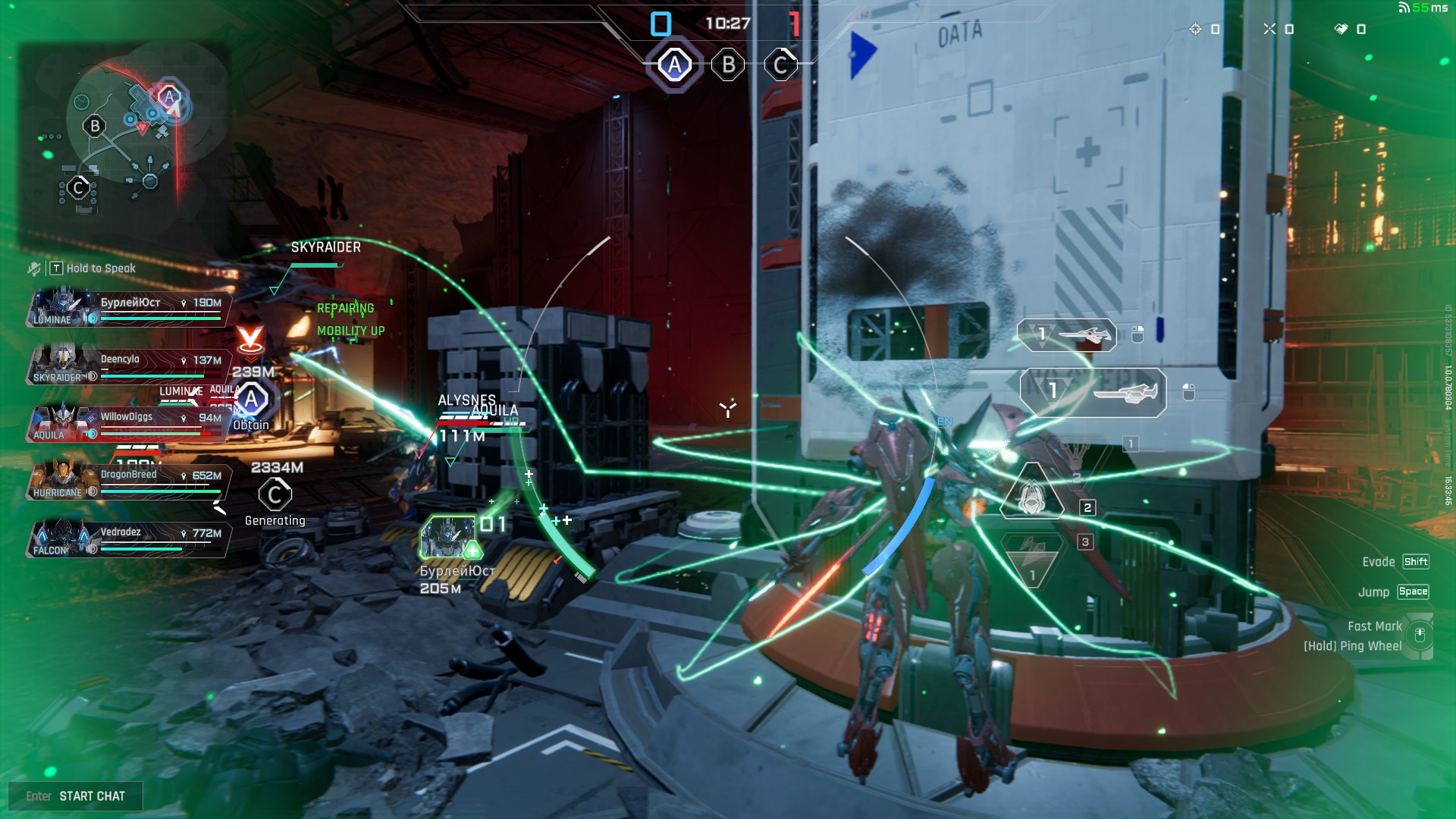
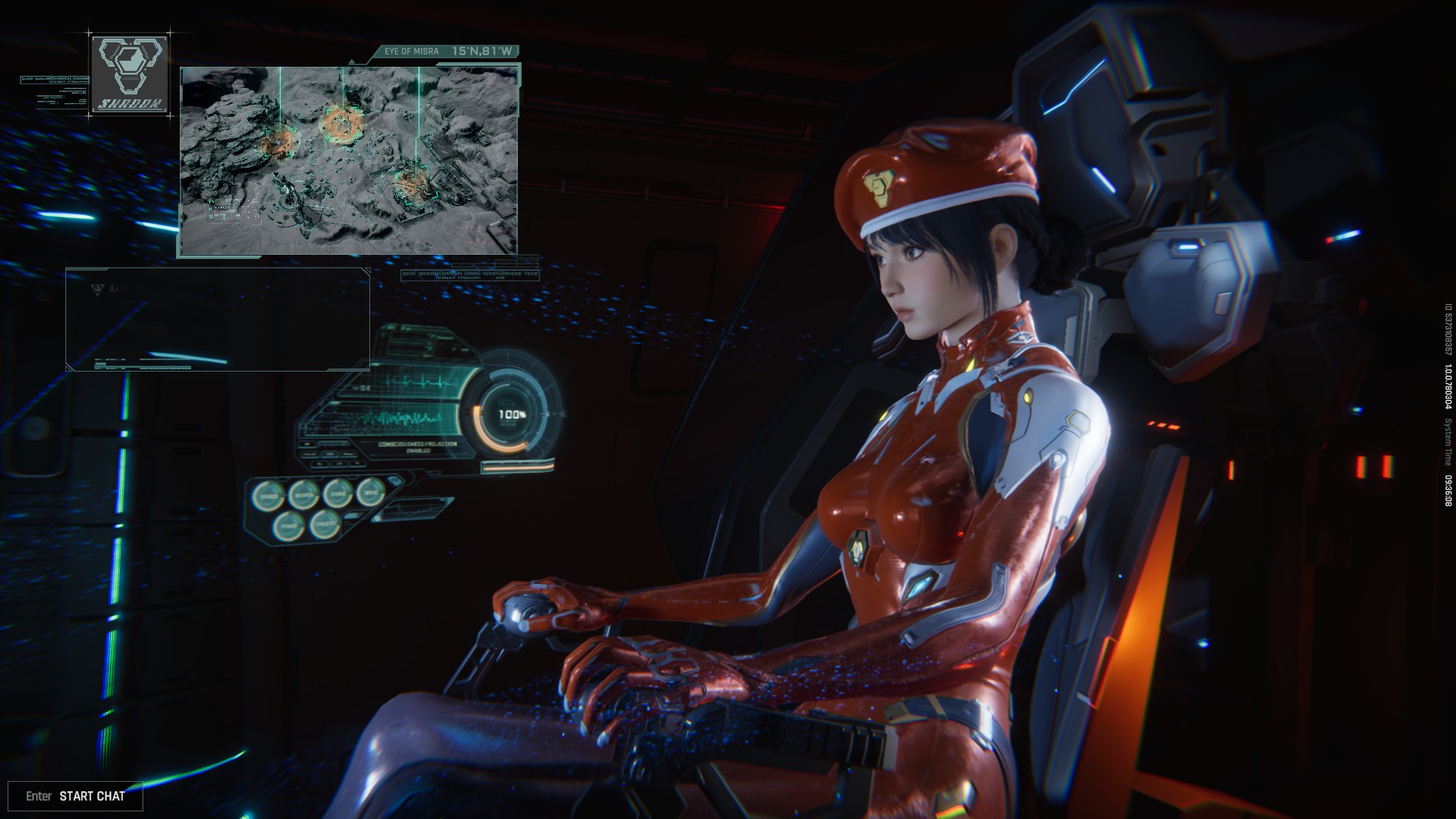
Since your strikers don't speak, the kind of audio cues from hero shooters are delivered by your pilots, whose portraits also appear on the HUD for triple kill-like actions. There's still a radial menu of additional shouts, but they can irritate rather than inspire.
I nonetheless found that my PvE and PvP encounters were neatly compartmentalized, so you can enjoy taking down a mega turret or passing enemy ships without also having to watch your back for other players hoping to get the jump on you. Usually, the encounter with rival teams only really happens when you're all congregating on an extraction point and trying to get out with your loot in one piece, or also getting greedy to see what another player might have.
Not that it's always a chaotic convergence, as extraction points are staggered. The first extraction point could appear on the far side of the map, and instead of burning out my fuel I can hang back and explore elsewhere waiting for the next opportunities to extract. I've still managed to extract by the second or third point, or died trying.
How much you get out of this Mashmak however is also dependent on how much you want to put into it, since a lot of the cool upgrades don't transfer to other modes, and you of course have to contend with the fact that having a bad run means you run the risk of losing any cool stuff you have equipped – though the stakes are only high in the most extreme difficulty. Nonetheless, you can still have a chance of obtaining cosmetic paint kits, which can carry over to other modes. Indeed, the major emphasis on customization in Mecha Break really comes in the cosmetic side, though this is also where the game's monetization really rears its head.
Trade-offs
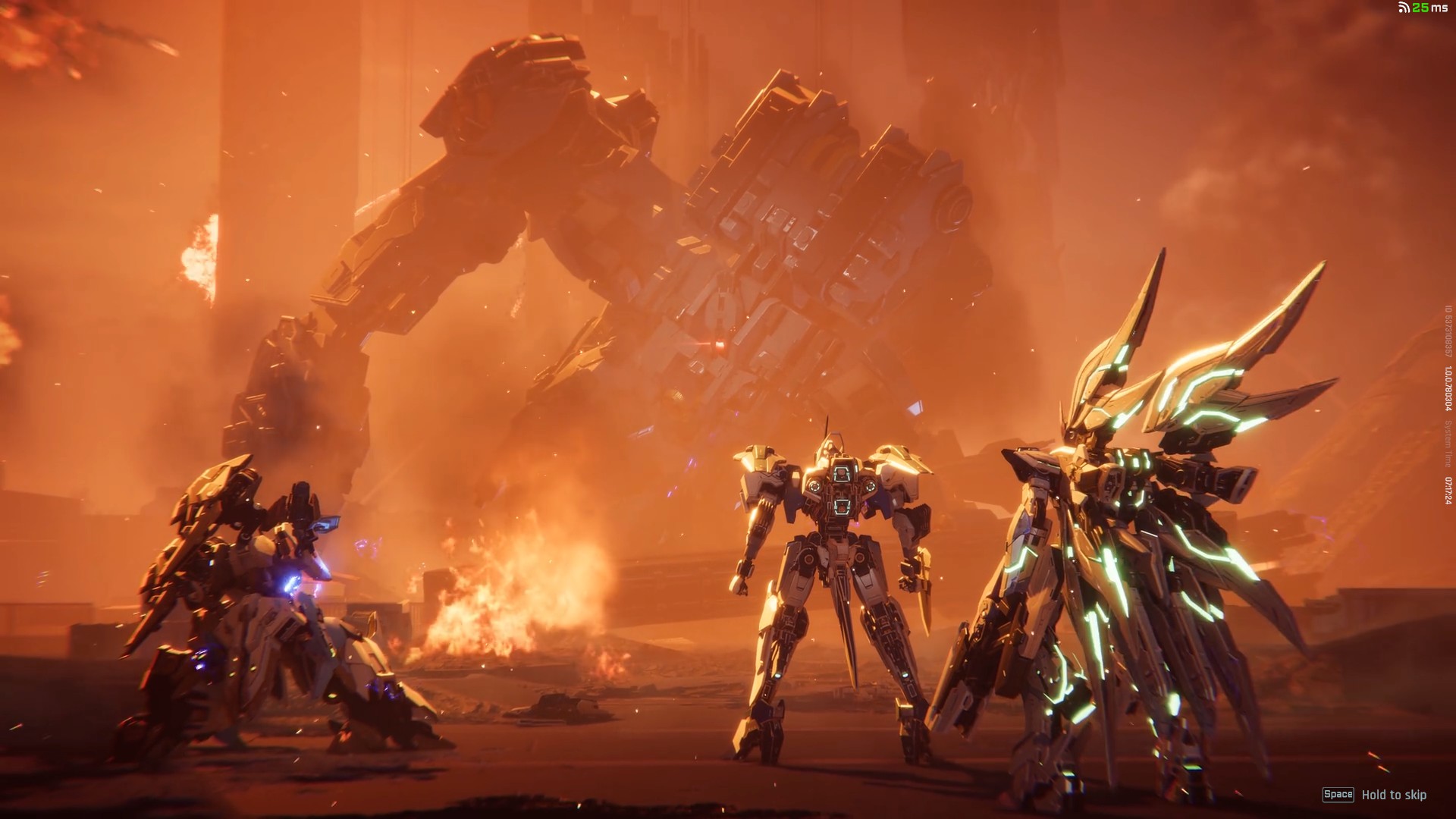
Because apart from the chance of getting a decent paint kit, the majority of cosmetic customization, including getting to create a pilot that's the opposite sex from what you selected at the start, is going to cost you real money. Substantial gameplay additions, such as unlocking new Strikers, can still be obtained by just playing the game to earn in-game mission tokens, though these a whopping 15,000 mission tokens each. When you may only earn a few hundred per match if you're lucky, it's a long grind that can also put you off spending it on other useful things, including just having an extra slot for a customized preset.
Given how Mecha Break is trading on its impeccable style, it does feel egregious how you're going to have to fork out just to try and make your mecha and pilots stand out as your own. It doesn't help that straight out the gate you're being advertised a flashy new pilot and Striker skin bundle (that is, for just one specific Striker) that costs more than most premium games. That there's also a marketplace that lets you sell or bid in auctions items that aren't just cosmetic but weapons and mods for use in Mashmak makes me queasy, and seems to undermine the developer's claims that this isn't a pay-to-win.
If you can get over its free-to-play trappings and just tune out its barrage of micro (and macro) transactions, the fundamental core of piloting these Strikers as they dart around the battlefield is still an awesome time that makes it stand out among the more grounded shooters. Hardcore mecha fans may turn their noses up at its shallow customization, and one that frankly leans too much towards the eye candy of your pilots than your Strikers, but there's still a strong foundation for Amazing Seasun to build on.
Mecha Break was reviewed on PC, with access provided by the publisher.
What else should you play? Take a look at our best online games!

I'm a freelance games journalist who covers a bit of everything from reviews to features, and also writes gaming news for NME. I'm a regular contributor in print magazines, including Edge, Play, and Retro Gamer. Japanese games are one of my biggest passions and I'll always somehow find time to fit in a 60+ hour JRPG. While I cover games from all platforms, I'm very much a Switch lover, though also at heart a Sega shill. Favourite games include Bloodborne, Persona 5, Resident Evil 4, Ico, and Breath of the Wild.
You must confirm your public display name before commenting
Please logout and then login again, you will then be prompted to enter your display name.
